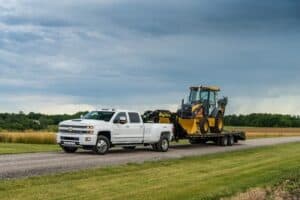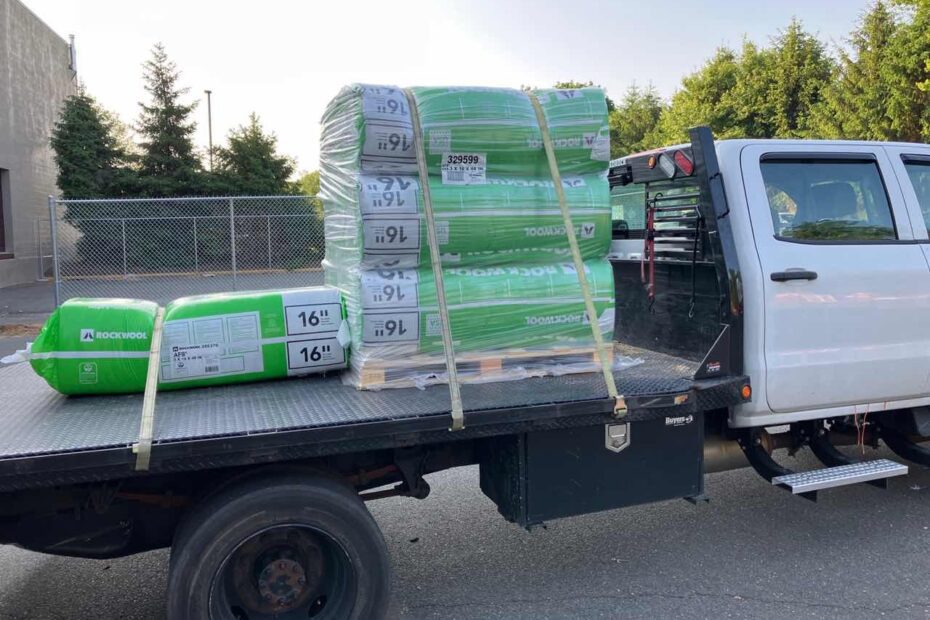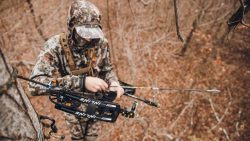Hot shot trucking permits and licensing are necessary for legal operation and transportation of goods. It is important to obtain the proper permits and licenses to avoid penalties and ensure compliance with regulations.
In the world of hot shot trucking, understanding the different permits and licenses required can be confusing. However, with the right information and guidance, you can navigate the process smoothly and start your hot shot trucking business with confidence. This article will provide an overview of hot shot trucking permits and licensing, explaining the different types of permits needed and the steps to obtain them.
Whether you are a new hot shot trucker or looking to expand your existing business, this guide will help you get on the road legally.

Credit: www.veritread.com
Understanding Hot Shot Trucking Permits
Hot shot trucking permits and licensing are essential for understanding the legal requirements in the industry. These permits ensure compliance and enable hot shot truckers to transport goods efficiently and legally. Understand the process to avoid penalties and maintain a successful hot shot trucking business.
Hot Shot Trucking Permits And Licensing
Hot shot trucking has become a popular choice for many truck owners and operators due to its flexibility and profitability. However, before you can hit the road and start hauling loads, it’s crucial to understand the permits and licensing requirements in the hot shot trucking industry.
In this section, we will delve into the types of permits required for hot shot trucking, the differences between interstate and intrastate permits, and how to obtain the necessary permits for hot shot trucking.
Types Of Permits Required For Hot Shot Trucking:
Hot shot trucking necessitates obtaining specific permits to ensure compliance with regulatory authorities. Here are the main types of permits you need to be aware of:
- USDOT Number: This permit is issued by the United States Department of Transportation and is mandatory for any commercial vehicle that transports cargo interstate, or if the gross vehicle weight rating (GVWR) or gross combination weight rating (GCWR) is above a certain threshold.
- Motor Carrier Authority: Also known as an MC number, this permit is required for interstate operations and is issued by the Federal Motor Carrier Safety Administration (FMCSA). It allows carriers to transport goods across state lines.
- Intrastate Authority: If you primarily operate within your home state, you will need to obtain an intrastate authority, which grants you permission to transport loads exclusively within that state.
Differences Between Interstate And Intrastate Permits:
It’s important to understand the distinctions between interstate and intrastate permits, as they dictate the geographical limitations of your hot shot trucking operations. Here’s what sets them apart:
Interstate Permits:
- Allow you to transport freight across state lines.
- Require a USDOT number and an MC number.
- Involve compliance with federal regulations, including Hours of Service (HOS) and Electronic Logging Device (ELD) requirements.
- Subject carriers to safety audits and regular inspections by the FMCSA.
Intrastate Permits:
- Limit your operations to a specific state.
- Usually require a USDOT number but may not necessitate an MC number.
- Are subject to state-specific regulations and permits.
- Often have fewer federal requirements compared to interstate operations.
Obtaining The Necessary Permits For Hot Shot Trucking:
To ensure legal operation and avoid hefty fines, it is essential to obtain the required permits for hot shot trucking. Here are the steps you should follow:
- Research: Familiarize yourself with the particular permits and licenses needed for hot shot trucking in your state and for your intended operations (interstate or intrastate).
- Complete the Application Process: Prepare the necessary paperwork and submit your applications for the appropriate permits, such as the USDOT number, MC number, and intrastate authority.
- Insurance: Obtain the required insurance coverage, such as liability insurance and cargo insurance, as per regulations and industry standards.
- Compliance: Ensure your vehicles, drivers, and operations comply with safety regulations, including vehicle inspections, driver qualifications, and adherence to HOS rules.
- Record Keeping: Maintain accurate and up-to-date records of your operations, including vehicle maintenance logs, driver records, and required reports.
- Renewals and Updates: Monitor permit expiration dates and renew them as required. Stay informed about any changes to regulations or additional permits that may be necessary in the future.
Understanding the permits and licensing requirements for hot shot trucking is crucial for a successful and legally compliant operation. By obtaining the appropriate permits, you can ensure a smooth and hassle-free experience as you transport goods to your clients’ destinations.
Licensing Requirements For Hot Shot Trucking
Hot shot trucking permits and licensing requirements are essential for operating within legal boundaries. Compliance with these regulations ensures smooth operations and avoids penalties, making it crucial for hot shot truckers to obtain the necessary permits and licenses.
Hot Shot Trucking Permits And Licensing
Are you considering a career in hot shot trucking? Before you hit the road, it’s crucial to have a clear understanding of the licensing requirements involved. In this section, we will explore the necessary permits and licensing you need to pursue hot shot trucking as a profession.
Let’s dive right in and discuss the key aspects of licensing for hot shot trucking.
Commercial Driver’S License (Cdl) Requirements:
To operate a hot shot truck, obtaining a Commercial Driver’s License (CDL) is essential. Here are the requirements you need to meet for obtaining a CDL:
- Age: Be at least 18 years old for intrastate hot shot trucking, or 21 years old for interstate operations.
- Driving Experience: Have a minimum of one year of safe driving experience with a regular driver’s license.
- Medical Examination: Pass a Department of Transportation (DOT) physical examination to ensure you are in good health and capable of operating a commercial vehicle.
Endorsements And Certifications Needed For Hot Shot Trucking:
To engage in hot shot trucking, specific endorsements and certifications may be required based on the type of cargo you plan to carry. Here are some common endorsements and certifications that hot shot truckers often pursue:
- Hazmat Endorsement: If you plan to transport hazardous materials, you will need a Hazmat Endorsement. This endorsement entails additional training, a background check, and passing a knowledge test.
- TWIC Card: For individuals transporting goods in ports and maritime environments, a Transportation Worker Identification Credential (TWIC) is necessary. This credential ensures compliance with security regulations.
- Oversize Load Certification: If you plan on hauling oversized or overweight loads, you may need to obtain an Oversize Load Certification. This certification demonstrates your capability to handle and transport larger cargo safely.
Steps To Obtain A Hot Shot Trucking License:
Now that you understand the basic requirements, let’s take a closer look at the steps involved in obtaining a hot shot trucking license:
- Research State Requirements: Review the specific regulations and requirements for hot shot trucking licensing in your state. Each state may have different criteria and processes.
- Commercial Learner’s Permit (CLP): Apply for a Commercial Learner’s Permit (CLP) by passing a written knowledge test. This permit allows you to practice driving a commercial vehicle under the supervision of a licensed driver.
- Training: Enroll in a reputable hot shot trucking training program to gain the necessary skills and knowledge required for the profession. These programs typically cover driving techniques, cargo securement, safety protocols, and more.
- Practice Driving and Skills Tests: Practice driving a commercial vehicle and familiarize yourself with the different types of loads you will be hauling. Schedule and pass the required skills tests, including a pre-trip inspection, basic control skills, and an on-road driving examination.
- Application for CDL: Once you have successfully completed the necessary training and passed all required tests, submit an application for your CDL at your local Department of Motor Vehicles (DMV) office. Pay the required fees and provide any additional documentation as requested.
- Obtain Endorsements: If your hot shot trucking operations require specific endorsements, such as Hazmat or Oversize Load, complete the additional requirements and tests to obtain those endorsements.
- Maintain Compliance: As a hot shot trucker, it’s crucial to stay up-to-date with licensing and permit renewals, undergo regular medical examinations, and comply with all applicable regulations.
By following these steps and ensuring you meet the necessary licensing requirements, you will be well-prepared to embark on your hot shot trucking journey.
Remember, it’s important to stay informed about any regulatory changes and consult with the appropriate authorities in your area to ensure you are in full compliance with all licensing requirements. Safe travels and successful hot shot trucking adventures await!
Compliance And Regulations In Hot Shot Trucking
Compliance and regulations are pivotal in hot shot trucking, particularly when it comes to obtaining the necessary permits and licenses. Ensuring adherence to these requirements is essential for a smooth and legal operation.
Hot Shot Trucking Permits And Licensing:
Hot shot trucking is a specialized form of trucking that involves the transportation of time-sensitive and smaller loads. As with any trucking operation, there are important compliance and regulatory requirements that hot shot trucking companies must adhere to ensure the safety of the drivers, the cargo, and the public.
In this section, we will discuss the key compliance and regulations that hot shot trucking companies need to be aware of.
Federal Motor Carrier Safety Administration (Fmcsa) Regulations:
- Licensing: Hot shot trucking companies are required to obtain proper operating authority and register with the FMCSA. This includes obtaining a Motor Carrier (MC) number and a USDOT number.
- Insurance: Hot shot trucking companies must meet the minimum insurance requirements as set by the FMCSA. This typically includes having liability and cargo insurance coverage.
- Hours of Service (HOS): Drivers operating hot shot trucks are subject to HOS regulations, which govern the maximum number of hours they can drive and the required rest periods.
- Drug and Alcohol Testing: Hot shot trucking companies must have a comprehensive drug and alcohol testing program in place for their drivers. This includes pre-employment testing, random testing, and post-accident testing.
Department Of Transportation (Dot) Requirements For Hot Shot Trucking:
- Vehicle Safety: Hot shot trucks must comply with DOT regulations for vehicle safety, including regular inspections and proper maintenance.
- Commercial Driver’s License (CDL): Drivers operating hot shot trucks with a gross vehicle weight rating (GVWR) of 26,001 pounds or more are required to have a valid CDL.
- Record Keeping: Hot shot trucking companies must maintain detailed records, including driver logs, vehicle inspection reports, and other relevant documentation.
- Electronic Logging Device (ELD): As per the ELD mandate, hot shot trucking companies must equip their vehicles with ELDs to record hours of service electronically.
Ensuring compliance with weight and size restrictions:
- Weight and Size Restrictions: Hot shot trucking companies must abide by weight and size restrictions imposed by local, state, and federal authorities. This includes adhering to maximum weight limits and securing cargo properly.
- Bridge and Road Restrictions: Hot shot trucking companies must stay updated on any bridge or road restrictions that may impact their routes due to weight or size limitations.
- Permits: Depending on the jurisdiction, hot shot trucking companies may need to obtain special permits for oversize or overweight loads.
In hot shot trucking, compliance with regulations and adherence to safety standards are vital. By understanding and following these guidelines, hot shot trucking companies can ensure the smooth and lawful operation of their business, ultimately contributing to a safer and more efficient transportation industry.
Insurance For Hot Shot Trucking
Obtaining the necessary permits and licensing is crucial for hot shot trucking operations. Ensure compliance and peace of mind with comprehensive insurance coverage tailored to the unique needs of hot shot trucking businesses.
Importance Of Insurance Coverage In Hot Shot Trucking
Hot shot trucking is a specialized type of transportation service that requires careful consideration of various aspects, including insurance coverage. Insurance is a crucial component for any hot shot trucking business, as it provides protection and peace of mind in case of unexpected incidents or accidents.
Adequate insurance coverage not only safeguards your trucking business but also helps establish trust with potential clients and partners. Here are some key reasons why insurance is important in hot shot trucking:
- Financial Protection: Accidents, damage to goods, or third-party injuries can lead to significant financial liabilities. Insurance coverage ensures that you are protected financially by providing compensation for losses or damages incurred.
- Compliance with Legal Requirements: Hot shot truckers are required to have specific insurance policies to comply with legal regulations. By obtaining the necessary insurance coverage, you can avoid legal complications and potential fines.
- Client Confidence: Clients prefer to work with hot shot truckers who have the appropriate insurance coverage. Having insurance demonstrates your commitment to professionalism, responsibility, and reliability, which can help you attract more clients and secure long-term business relationships.
- Peace of Mind: When you are out on the road, unexpected events can occur at any time. With insurance coverage in place, you can have peace of mind knowing that you are protected and won’t incur substantial financial burdens in case of accidents or incidents.
- Protection for Your Assets: Hot shot trucking involves valuable assets, including your truck and the cargo you transport. Insurance coverage not only safeguards these assets but also provides options for repair or replacement in case of theft, damage, or other mishaps.
Types Of Insurance Policies Needed For Hot Shot Truckers
Hot shot truckers require specific insurance policies tailored to their unique needs and risks. Understanding the different types of insurance coverage available is essential for ensuring comprehensive protection for your hot shot trucking business. Here are the main types of insurance policies needed for hot shot truckers:
- Commercial Auto Liability Insurance: This insurance policy provides coverage for bodily injury or property damage caused by accidents involving your commercial vehicle(s). It is a legal requirement for hot shot truckers.
- Physical Damage Insurance: This coverage protects your truck(s) against physical damage resulting from collisions, fires, theft, vandalism, and other covered incidents.
- Cargo Insurance: Cargo insurance covers the value of the goods you transport. It provides compensation if the cargo is lost, stolen, damaged, or destroyed during transit.
- General Liability Insurance: General liability insurance protects your hot shot trucking business against third-party claims for bodily injury, property damage, and advertising injury. It covers legal fees and settlements in such cases.
- Workers’ Compensation Insurance: If you have employees, workers’ compensation insurance is essential. It provides medical benefits and wage replacement to employees who are injured while on the job.
Finding The Right Insurance Provider For Your Hot Shot Trucking Business
When it comes to finding the right insurance provider for your hot shot trucking business, it is essential to consider several factors to ensure adequate coverage and reliable service. Keep the following points in mind:
- Research and Compare: Take the time to research and compare insurance providers specializing in commercial transportation. Look for companies with a good reputation, strong financial stability, and experience in the trucking industry.
- Coverage Specific to Hot Shot Trucking: Ensure that the insurance providers you consider offer policies designed specifically for hot shot trucking businesses. This will ensure that your unique needs and risks are adequately covered.
- Customizable Policies: Look for insurance providers that offer customizable policies, allowing you to tailor coverage to your specific requirements. This flexibility can help you optimize coverage while minimizing costs.
- Pricing and Deductibles: Obtain quotes from multiple insurance providers and compare pricing and deductibles. While cost is a significant factor, ensure that you prioritize coverage quality and reliability.
- Read Reviews and Seek Recommendations: Read reviews from other hot shot trucking professionals and seek recommendations from trusted industry contacts. Consider their experiences and feedback when making your decision.
- Knowledgeable and Supportive Agents: Choose an insurance provider with knowledgeable and supportive agents who understand the unique challenges of hot shot trucking. A responsive and supportive team will be valuable if you need to file a claim or have any concerns.
By carefully considering these factors and choosing the right insurance provider, you can protect your hot shot trucking business and ensure that you have coverage that meets your specific needs.
Safety Measures In Hot Shot Trucking
Operating a hot shot trucking business requires complying with necessary permits and licensing. Following the established safety measures ensures a smooth and secure transportation process for both drivers and cargo.
Hot Shot Trucking Permits And Licensing
Hot shot trucking is a specialized form of transportation that involves the quick and efficient delivery of cargo using smaller trucks. While obtaining the necessary permits and licenses is essential for operating in this industry, it is equally important to prioritize safety measures.
By adhering to strict safety protocols, hot shot truckers can minimize risks and ensure smooth operations. In this section, we will explore the key safety measures that hot shot truckers need to consider.
Pre-Trip Inspection Checklist For Hot Shot Truckers
To ensure safe travels and prevent any potential issues on the road, hot shot truckers should perform comprehensive pre-trip inspections. Here are the essential items to include in your pre-trip inspection checklist:
- Tires: Check the tire pressure, look for signs of wear or damage, and make sure they are properly inflated.
- Lights: Verify that all lights, including headlights, brake lights, turn signals, and emergency flashers, are functioning correctly.
- Brakes: Test the brake system to ensure proper functionality and adjust as necessary.
- Fluids: Check the levels of essential fluids such as oil, coolant, and windshield washer fluid.
- Mirrors: Ensure that all mirrors are properly adjusted for clear visibility.
- Safety equipment: Verify the presence and condition of safety equipment such as fire extinguishers, reflective triangles, and first-aid kits.
By diligently following this pre-trip inspection checklist, hot shot truckers can identify and address any potential safety concerns before hitting the road.
Best Practices For Securing Loads In Hot Shot Trucking
Properly securing loads is crucial to prevent accidents, cargo damage, and injuries. Here are some best practices to follow when securing loads in hot shot trucking:
- Use appropriate tie-down equipment: Select the right combination of straps, chains, and binders based on the weight and size of the cargo.
- Distribute weight evenly: Ensure the weight is evenly distributed across the trailer or truck bed to maintain balance during transport.
- Double-check securement points: Regularly inspect and tighten tie-downs to prevent any shifts or loosening during transit.
- Utilize edge protection: Use edge protectors to safeguard cargo from any potential damage caused by straps or chains.
- Consider weather conditions: Adjust securement methods based on weather conditions to account for wind, rain, or other environmental factors.
By following these best practices, hot shot truckers can transport their loads safely and minimize the risk of accidents or cargo mishaps.
Safe Driving Techniques And Tips For Hot Shot Truckers
Safe driving is paramount in hot shot trucking to protect yourself, other drivers, and your cargo. Here are some essential safe driving techniques and tips for hot shot truckers:
- Maintain a safe following distance: Keep a safe distance from vehicles in front to allow for ample reaction time in case of sudden stops or emergencies.
- Avoid distractions: Minimize distractions such as using mobile devices or eating while driving to maintain focus on the road.
- Observe speed limits: Adhere to posted speed limits and adjust your speed based on road and weather conditions.
- Stay vigilant: Continuously scan the road ahead and check mirrors regularly to stay aware of surrounding vehicles and potential hazards.
- Take breaks: Fatigue can impair your driving abilities, so schedule regular breaks to rest and recharge.
By implementing these safe driving techniques and tips, hot shot truckers can contribute to a safer transportation environment and ensure the successful completion of their deliveries.
Remember, safety should always be the top priority in hot shot trucking. By following the pre-trip inspection checklist, adopting best practices for securing loads, and implementing safe driving techniques, hot shot truckers can maintain a reputation for reliability, professionalism, and most importantly, safety.
Advantages And Challenges Of Hot Shot Trucking
Hot shot trucking permits and licensing offer several advantages, including increased earning potential and flexibility. However, obtaining the necessary permits can be challenging due to strict regulations and paperwork.
Hot Shots Trucking Permits And Licensing
Hot shot trucking is a popular choice for small businesses that need to transport time-sensitive or smaller loads. With its unique advantages and challenges, it’s crucial for entrepreneurs to understand the ins and outs of this industry. In this section, we’ll explore the benefits of hot shot trucking for small businesses and the potential challenges they may face, as well as strategies to overcome those challenges.
Benefits Of Hot Shot Trucking For Small Businesses:
- Flexibility: Hot shot trucking provides an excellent option for small businesses that require quick and flexible hauling solutions. With hot shot trucks, you can transport smaller loads and easily adapt to changing delivery schedules.
- Cost-effective: Hot shot trucking allows small businesses to save on expenses compared to traditional trucking methods. Since hot shot trucks are typically smaller and require less maintenance, they offer a more economical solution for transporting smaller loads.
- Quick turnaround: One of the main benefits of hot shot trucking is the ability to offer expedited delivery. With shorter transit times, small businesses can meet tight deadlines and satisfy customer demands effectively.
- Extensive coverage: Hot shot trucking allows businesses to reach remote areas or locations where large carriers might not have access. This can be particularly beneficial for industries such as oil and gas, construction, or agriculture.
Potential Challenges And How To Overcome Them In Hot Shot Trucking:
- Competition: In the hot shot trucking industry, competition can be fierce. To overcome this challenge, focus on differentiating your services. Offer exceptional customer service, optimize your online presence, and build strong relationships with clients to stand out from the competition.
- Time management: With tight delivery deadlines, efficient time management is crucial in hot shot trucking. To overcome this challenge, develop a solid schedule, prioritize tasks, and use technology tools like GPS and logistics software to streamline operations.
- Equipment maintenance: As with any transportation business, equipment maintenance is essential. To ensure smooth operations, implement a regular maintenance schedule, conduct thorough inspections, and address any issues promptly. Additionally, having contingency plans in place, such as access to backup trucks or partnering with reliable maintenance service providers, can help minimize disruptions.
- Regulatory compliance: Hot shot trucking requires adhering to various regulatory requirements, such as obtaining the necessary permits and licenses. To overcome this challenge, create a checklist of all the permits and licenses needed for your specific operations, stay updated on regulatory changes, and seek assistance from professionals in the industry if needed.
Hot shot trucking can offer small businesses significant advantages, including flexibility, cost-effectiveness, quick turnaround, and extensive coverage. However, it’s essential to overcome potential challenges such as competition, time management, equipment maintenance, and regulatory compliance. By understanding these aspects and implementing effective strategies, small businesses can thrive in the hot shot trucking industry and deliver exceptional services to their clients.
Growing Your Hot Shot Trucking Business
Grow your hot shot trucking business by obtaining the necessary permits and licenses for smooth operations and compliance with legal regulations. Streamline your processes and expand your clientele by ensuring you have the right credentials in place.
Hot shot trucking is a competitive industry that requires careful strategizing and planning in order to thrive. As you aim to grow your hot shot trucking business, it’s important to consider effective marketing techniques, networking strategies, and ways to maximize profitability.
In this section, we will explore some key strategies and tips that can help you expand your business successfully.
Strategies For Expanding Your Hot Shot Trucking Business:
- Diversify your services: Consider offering a wider range of hauling services to attract a larger customer base. This could include transporting specialized goods, offering expedited shipping options, or catering to specific industries.
- Expand your network: Building strong relationships within the industry is crucial for growth. Nurture connections with shippers, brokers, and other trucking professionals to increase your chances of securing profitable contracts.
- Invest in technology: Utilize transport management software, GPS tracking systems, and other technological solutions to streamline your operations and improve efficiency. This will not only impress clients but also give you a competitive advantage.
- Optimize your online presence: Establish a professional website and maintain an active presence on social media platforms. Utilize search engine optimization (SEO) techniques to improve your online visibility and attract potential customers.
- Collaborate with other trucking companies: Partnering with other hot shot truckers can help you share resources, expand your service area, and bid on larger contracts. This collaboration can open doors to new opportunities for growth.
Marketing And Networking Tips For Hot Shot Truckers:
- Attend industry events: Participate in trade shows, conferences, and networking events to meet potential clients and industry professionals. Networking face-to-face can help build trust and establish valuable connections.
- Utilize online platforms: Join online trucking forums, social media groups, and industry associations to connect with like-minded professionals. Engage in discussions, share valuable insights, and build your reputation within the community.
- Offer exceptional customer service: Word-of-mouth referrals play a significant role in the trucking industry. Providing outstanding customer service will not only impress your clients but also encourage them to recommend your services to others.
- Develop a strong brand identity: Create a unique logo, maintain consistent branding across all channels, and highlight your strengths to differentiate yourself from competitors. A strong brand identity helps build trust and recognition among potential customers.
Maximizing Profitability In Hot Shot Trucking:
- Efficient route planning: Optimize routes to minimize fuel costs, reduce mileage, and maximize load capacity. Utilize GPS navigation tools and consider time-sensitive factors like traffic and weather conditions.
- Negotiate favorable rates: Stay informed about market rates and negotiate contracts that are mutually beneficial for both parties. Building strong relationships with brokers and shippers can give you an upper hand in these negotiations.
- Monitor expenses: Keep a close eye on your overhead costs, including fuel, maintenance, insurance, and permits. Regularly review your expenses and explore ways to minimize unnecessary spending.
- Regular equipment maintenance: Properly maintain your trucks and trailers to avoid unexpected breakdowns, which can lead to expensive repairs and downtime. Regular maintenance not only ensures safe operations but also prolongs the lifespan of your equipment.
By implementing these strategies and tips, you can position your hot shot trucking business for growth and profitability. Remember, success in this industry requires constant adaptation and a commitment to delivering exceptional service to your clients.
Frequently Asked Questions For Hot Shot Trucking Permits And Licensing
Can You Hotshot With A 2500?
Yes, you can hotshot with a 2500.
Can You Hotshot With A Half Ton Truck?
Yes, you can hotshot with a half ton truck.
What Is The Best Non Cdl Hotshot Truck?
The best non-CDL hotshot truck is the _______ (specific truck model name) due to its ________ (specific feature/benefit).
Is Hotshotting Worth It?
Hotshotting is worth it if you are looking for fast delivery and personalized service.
Conclusion
Securing the necessary permits and licenses for hot shot trucking is a crucial step in ensuring compliance and minimizing legal risks. Without the proper documentation, businesses may face hefty fines or even have their operations shut down. By obtaining the relevant permits and licenses, hot shot trucking companies can operate legally and establish credibility with clients and authorities.
The process may seem daunting, but with the right understanding and guidance, it can be accomplished efficiently. Researching the specific requirements for your state, maintaining accurate records, and staying up-to-date with any changes in regulations are key to successfully managing the permitting and licensing process.
By prioritizing compliance, hot shot trucking businesses can enjoy smooth operations, minimize disruptions, and build a solid reputation within the industry. Invest the time and effort into understanding and obtaining the necessary permits and licenses, and your hot shot trucking venture will be primed for success.
- What Is the 11 Hour Limit: A Comprehensive Guide - June 7, 2024
- What Happens if You Drive on a Suspended License in Virginia - June 7, 2024
- Wilcox Justice Court Overview: Online Services & Legal Proceedings - June 6, 2024




